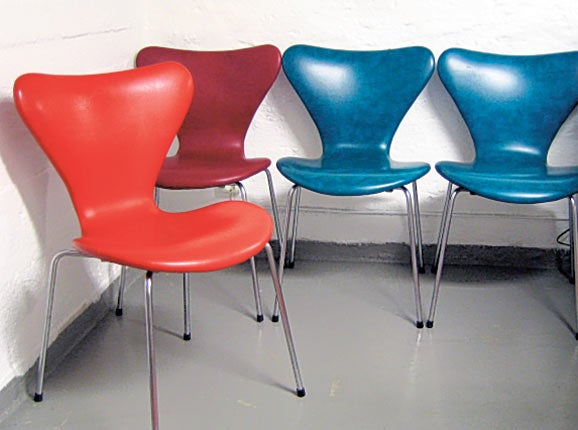The Secret History Of: Jacobsen Series 7 chair

Your support helps us to tell the story
From reproductive rights to climate change to Big Tech, The Independent is on the ground when the story is developing. Whether it's investigating the financials of Elon Musk's pro-Trump PAC or producing our latest documentary, 'The A Word', which shines a light on the American women fighting for reproductive rights, we know how important it is to parse out the facts from the messaging.
At such a critical moment in US history, we need reporters on the ground. Your donation allows us to keep sending journalists to speak to both sides of the story.
The Independent is trusted by Americans across the entire political spectrum. And unlike many other quality news outlets, we choose not to lock Americans out of our reporting and analysis with paywalls. We believe quality journalism should be available to everyone, paid for by those who can afford it.
Your support makes all the difference.There's no mistaking the voluptuous hourglass form of Arne Jacobsen's 1955 Model 3107 chair, better known as the Series 7. So the Danish designer must have seen it as a fitting tribute when the Swinging Sixties' most infamous set of curves straddled his creation for a nude photo shoot, sending sales through the roof, where they remain to this day.
The curves in question belonged to Christine Keeler of the Profumo affair scandal, which ultimately brought down the Conservative government of Harold Macmillan in 1963. The chair itself? Well, it turned out to be a copy, one of half a dozen picked up by the photographer Lewis Morley for five shillings each in a Heal's sale.
At the time of the shoot, the photographer, model and designer were already famous, Jacobsen for his Egg and Swan chairs, two curvaceous armchairs from 1956 that also remain popular. But it was this iconic image that propelled the Series 7 towards stardom in its own right. Despite the countless copys that continue to proliferate, five million of the genuine article have been sold. It has even popped up on EastEnders.
When placed next to a real Series 7, the photographed copy is shown up for what it really is. "The plywood is much thicker and less subtly moulded," explains Gareth Williams of the Victoria and Albert Museum's furniture, textiles and fashion department, to whom Morley donated the chair. "The cinched 'waist' is more pronounced, and the front of the seat is set back too far. Unlike Jacobsen's chair, this model has a cut-out handle at the top of the seat, but even this is inaccurately positioned and irregularly cut."
This is quite a special copy, though, given its underside bears the names of a number of famous personalities whose bottoms have graced its copycat frame – David Frost, Joe Orton, Barry Humphries.
Jacobsen's Series 7 chair – he died in 1971 aged 69 – was a paean to modern living: light, stackable and compact. It remains the chair indeed in many contemporary homes. Real ones, produced by Fritz Hansen in pressure-moulded veneer in beech, ash or coloured lacquer finishes, cost over £300. John Lewis and eBay have passable copies.
Join our commenting forum
Join thought-provoking conversations, follow other Independent readers and see their replies
Comments